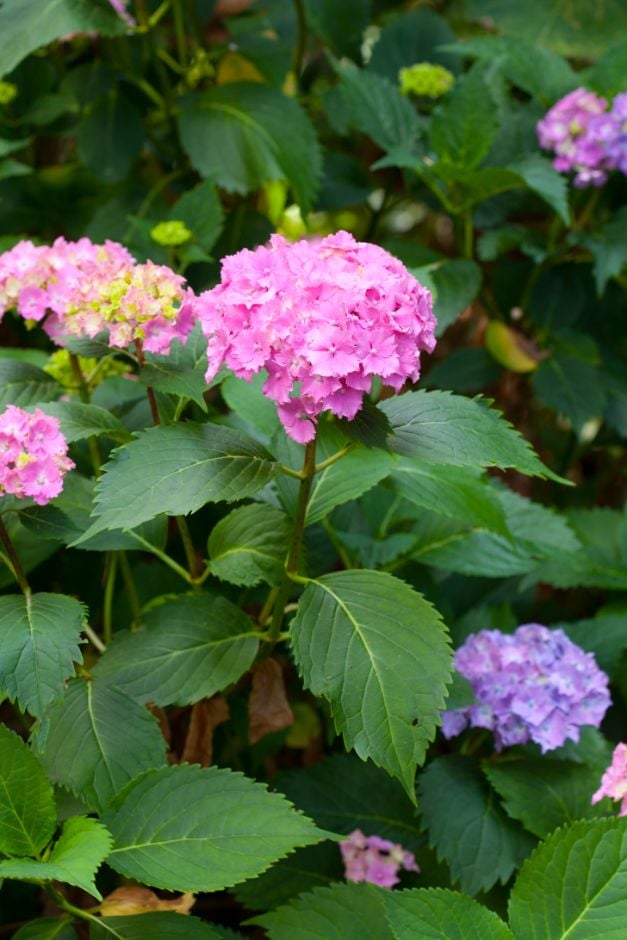Hydrangea macrophylla (H)
hortensia
A large, rounded, deciduous shrub with rather coarse, oval, dark green leaves to 20cm long. In mid- and late summer produces large, flattened flowerheads consisting of a few sterile, pink florets with large petals and many small, fertile, blue or pink florets. There are many cultivars, in two group: lacecaps have a few large, sterile florets round the outside with many small fertile florets in the centre; mopheads consist mostly of large, sterile florets
Other common names
mophead hydrangea
Buy this plant
Size
Ultimate height
1.5–2.5 metresTime to ultimate height
5–10 yearsUltimate spread
1.5–2.5 metresGrowing conditions
Moisture
Moist but well–drainedpH
Acid, Alkaline, NeutralColour & scent
| Stem | Flower | Foliage | Fruit | |
| Spring | Green | |||
|---|---|---|---|---|
| Summer | Blue Pink | Green | ||
| Autumn | Green | |||
| Winter |
Position
- Full sun
- Partial shade
Aspect
South–facing or West–facing or North–facing or East–facing
Exposure
Sheltered Hardiness
H5Botanical details
- Family
- Hydrangeaceae
- Native to GB / Ireland
- No
- Foliage
- Deciduous
- Habit
- Bushy
- Potentially harmful
- Skin allergen. Wear gloves and other protective equipment when handling. Pets (dogs, cats): Harmful if eaten. For further information and contact numbers regarding pets, see the HTA guide to potentially harmful plants
- Genus
Hydrangea can be deciduous or evergreen shrubs, or self-clinging climbers, with flowers in clusters usually comprising both small fertile and more showy sterile flowers; often good autumn colour
- Name status
Correct
- Horticultural Group
- Hortensia hydrangeas (also known as mopheads) are compact bushy deciduous shrubs with broadly ovate leaves and rounded flower clusters composed almost entirely of showy sterile flowers
- Plant range
- Japan
How to grow
Cultivation
Grow in any moist but well-drained soil in partial shade or grow in sun if soil remains reliably moist. Improve chalky soils with organic matter to support good growth. See shrubby hydrangea cultivation for further advice
Propagation
Propagate by softwood cuttings in early summer or hardwood cuttings in winter
Suggested planting locations and garden types
- Cottage and informal garden
- Flower borders and beds
Pruning
See pruning group 4 for further advice and video guide
Pests
May be susceptible to aphids, capsid bug, hydrangea scale and vine weevil
Diseases
May be susceptible to a leaf spot, grey moulds, powdery mildews and honey fungus
Get involved
The Royal Horticultural Society is the UK’s leading gardening charity. We aim to enrich everyone’s life through plants, and make the UK a greener and more beautiful place.